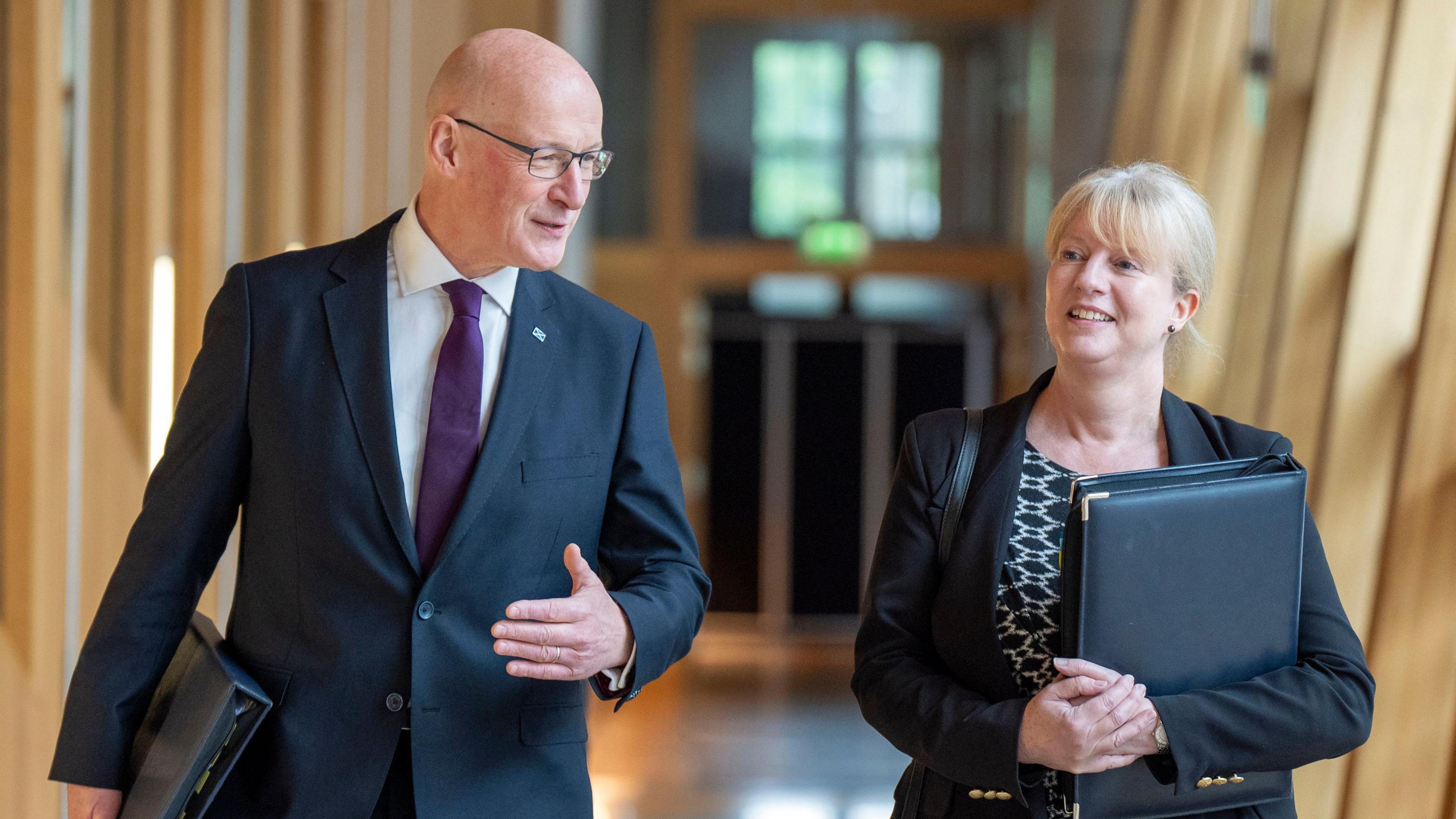Why Gers figures will play a prominent role in the Scottish election

First Minister John Swinney and Finance Secretary Shona Robison will be keen to talk up the opportunities for growth in Scotland
- Published
Gers-day, every August, is a statistical festival to add to Edinburgh's other colourful offerings. It gives performers a wide variety of creative options to attract audiences.
Dig into them, and you'll find Scotland's public finances benefit a lot from the generosity of the Treasury in London. Spending per head last year was nearly £2,700 ahead of the figure for the UK as a whole.
Or you may find, as the Office for National Statistics told us for 2022-23, that spending per head is higher in London.
The same set of figures showed us that the net transfer of funds was not as big as the ones for north-west England, Wales, Yorkshire and Humberside or the West Midlands. Just because Scotland is the only part of the UK to go through this annual analysis does not mean it's the outlier.
Scottish public spending deficit grows as oil revenue drops again
- Published13 August
What is Gers and how is it calculated?
- Published13 August
Dig a bit deeper, as the Scottish government has done, and you'll find that devolved revenues have been rising faster than devolved expenditure. That was the first choice of interpretation by Holyrood's Finance Secretary Shona Robison.
That may be so, but expenditure is a much bigger number than devolved revenue, so the growth rates don't matter as much as the actual numbers.
The minister added that Scotland raises more money per head than other parts of the UK except London and south-east England.
What puts it in that position is oil and gas tax revenue, which is on a long-term downward trend. Even if it weren't, it's widely recognised as an unreliable way to balance the nation's books.
Looking on the bright side of independence doesn't answer the awkward questions this raises, where there would be no division between devolved and reserved finances and a future with not much oil and gas revenue flowing.
What choices would an independent Scottish government make?
An independent Scotland would, last year, have had to borrow – if it could persuade the bond markets – more than one ninth (11.6%) of the economy's annual total output.
The UK last year was borrowing one-twentieth (5.1%), while the European Union tells it members that less than one-thirtieth (3%) is more like the maximum sustainable level.
The answer from supporters of independence is that they could unleash the potential of the Scottish economy to grow faster and fill Holyrood's coffers with more tax revenue.
That is preferable to setting out where the spending axe might have to fall.
Gers figures, they remind us, reflect the slow growth you get under the current constitutional arrangements, and it should be possible to do much better.
We're already finding that faster growth, sought by ministers in Westminster and Holyrood, is hard to achieve.
It depends on the choices a newly independent Scottish government would make. There are trade-offs between growth and fairness.
That independent future may not seem imminent.
But First Minister John Swinney has made that his chosen battleground for the Holyrood election next May. These Gers figures will surely feature in that debate.